The Surface 3 Review
by Brett Howse on May 4, 2015 9:00 AM ESTGPU Performance
The Surface 3 with the Atom x7-Z8700 pairs the Intel Gen 8 Graphics from Broadwell with the Airmont CPU cores of Atom. Unlike the Broadwell cores though, the Surface 3 SoC only has 16 execution units (EUs) as compared to 24 in Core M. The maximum frequency is also reduced to 600 MHz for these cores, as compared to up to 900 MHz in Core M. This is all necessary to keep the x7-8700 in the 2 watt SDP.
So performance will be a step back compared to Core M, but really this should be no surprise. The interesting comparison will be how it compares to Surface Pro 3 with Haswell Gen 7.5 graphics and of course to Bay Trail equipped tablets.
We will start with some synthetic tests and then move on to DOTA 2 to see how it performs on a real world game.
3DMark Tablet
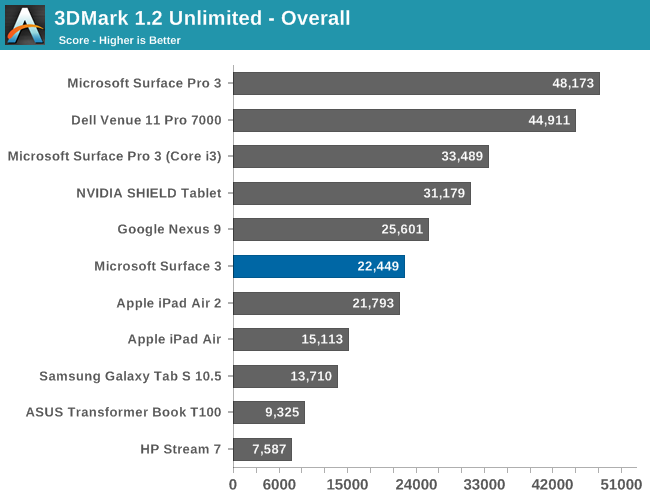


The GPU upgrade is a big improvement over the ASUS T100's Bay Trail graphics, but the Atom GPU still can not compete with the fastest tablet SoCs out there.
3DMark Notebook
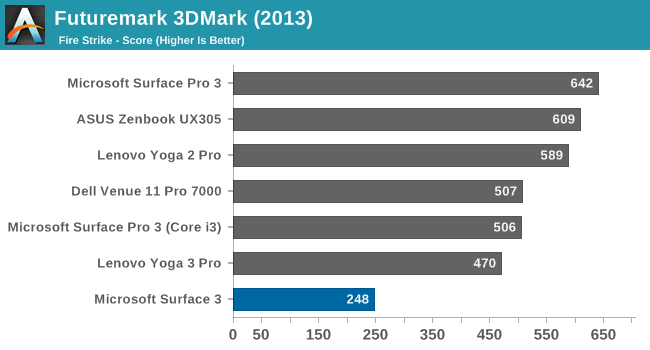
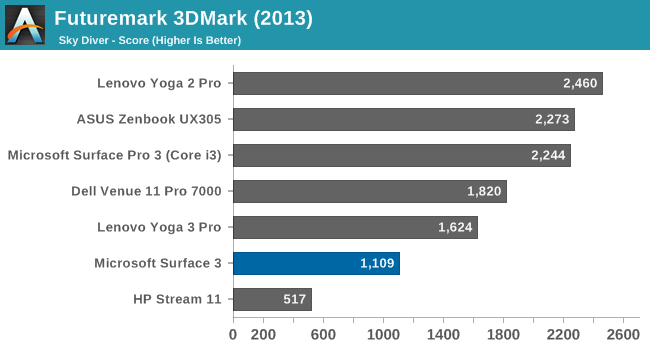
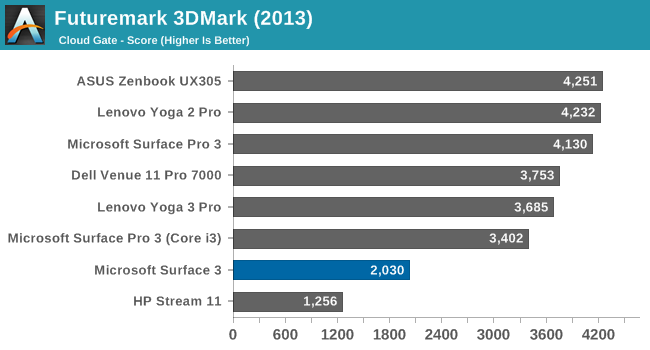

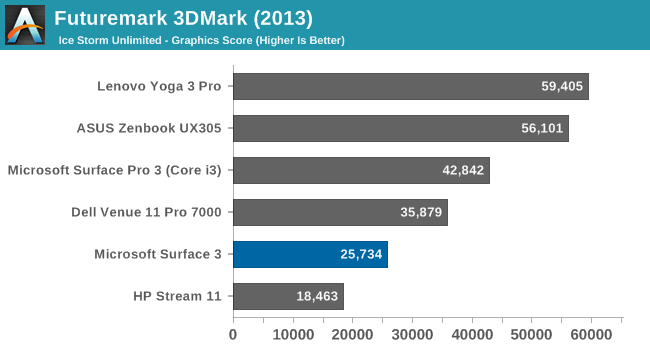
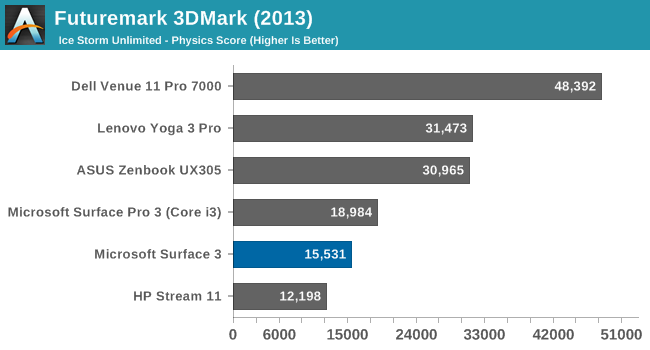
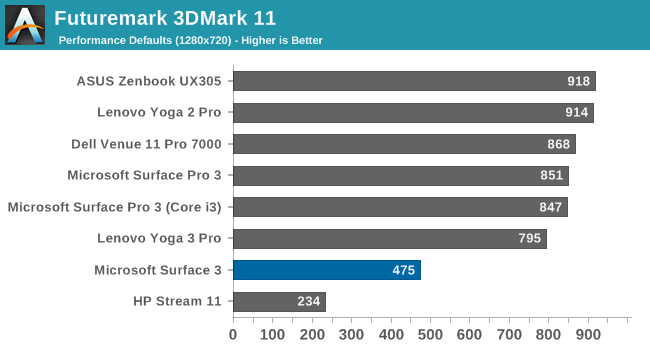
Comparing the Surface 3 to PC class hardware puts it in a pretty poor light when looking at GPU performance. Our 3DMark tests have the Surface Pro 3 with the Core i3 on average 40% faster than Surface 3. Comparing it to the Dell Venue 11 Pro with Core M, we find the Core M GPU is on average 47% faster, which is quite a gap. Let’s not forget though that the Surface 3 is a mere 2 watt SDP, whereas Core M is a 4.5 W TDP and the Haswell-Y in Surface Pro 3 is an 11.5 W TDP.
GFXBench Tablet (OpenGL)
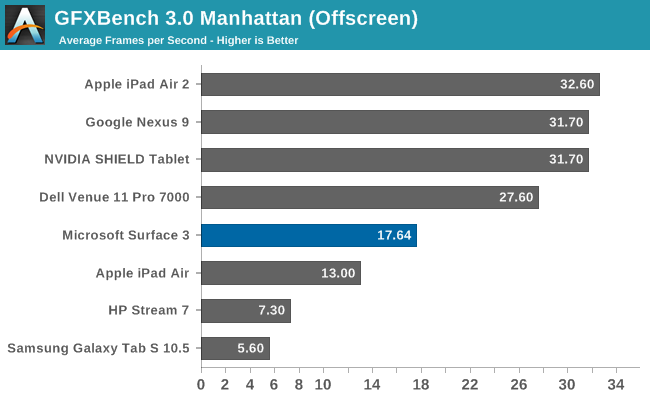
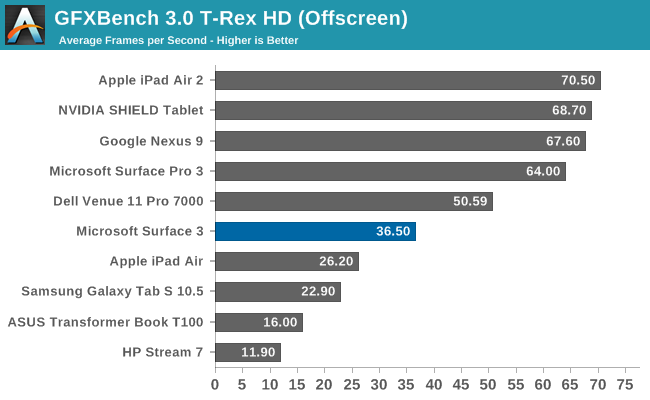
As with the 3DMark scores, the GPU upgrade is significant, but still a ways back of the best tablet GPUs out there. Intel still has some work to do on this front.
GFXBench Notebook (DirectX)
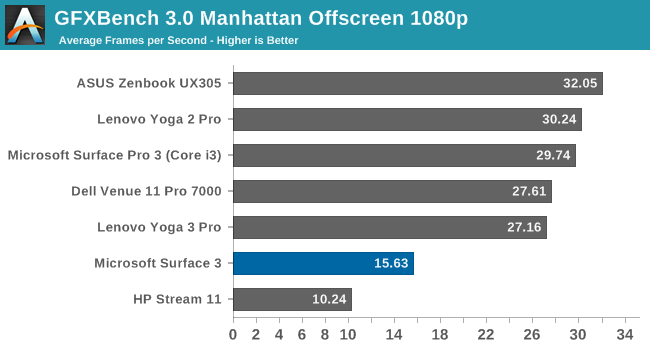
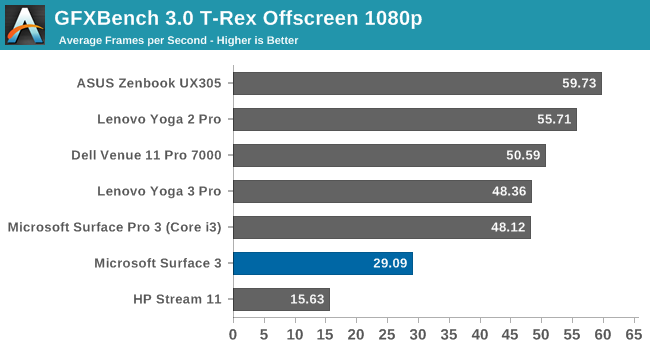
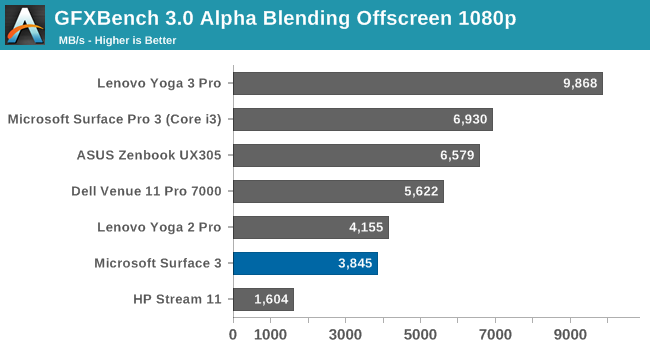

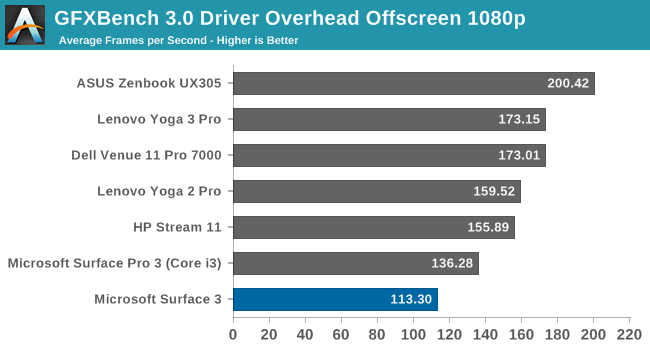
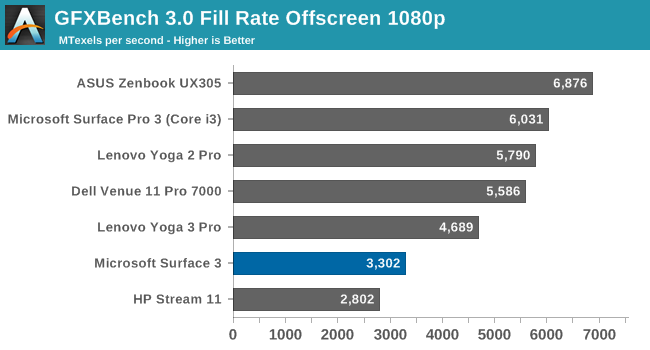

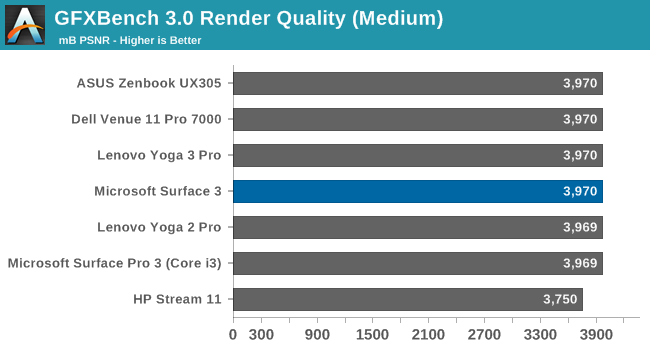
We see a similar story with GFXBench on the notebook side. The 16 EUs in our Atom SoC just cannot compete against the larger and faster GPUs in Core.
Moving on to a real-world game, we use a custom DOTA 2 benchmark for our lower powered devices. It is a very popular battle-arena game, and the GPU requirements are not too demanding.
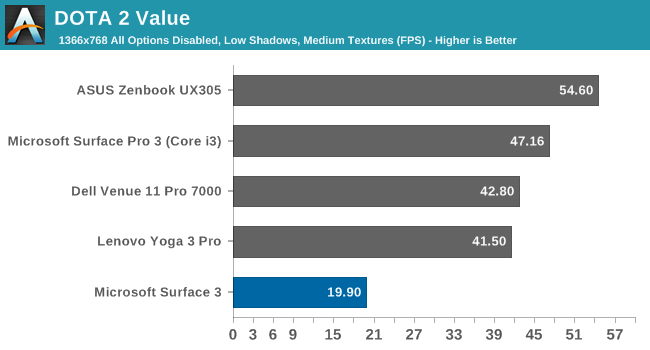
The GPU in the Surface 3 is really not enough to play most games, and even on our value settings, the Surface 3 is not a great experience for DOTA 2. The higher TDP of Core M lets it do ok in this test, but overall the Surface 3 is a long way back of even the Surface Pro 3 Core i3.
Storage Performance
Like most tablets, the Surface 3 utilizes eMMC storage rather than the SSD storage found on higher priced laptops and Core M tablets. It costs less, it is less complex, and it works. So expectations are that it will not be able to compete with the fastest solutions out there. But as a tablet, workloads should be less complex, at least in theory.
Unfortunately Microsoft shipped me the 64 GB version of the tablet, and due to PCMark 8 requiring a large amount of free space in order to perform its tests, it was unable to be run on this device. But we have run into this issue in the past, and we can turn to a couple of other tools to get a feel for how the storage performance is. Even though eMMC is slower than a good SSD, there is still different levels of performance based on the NAND in use and the controller.
I ran CrystalDiskMark over a 4 GB span and the results are below.
Surface 3 eMMC Storage (left) vs Surface Pro 3 Core i3 SSD (right)
Compared to a true SSD, the eMMC performance leaves a lot to be desired. In fact, most of the time when I was using the tablet and I found it slow, such as installing software, or loading programs, it was mostly disk bound. There are faster eMMC options available, but I will refrain from comparing it to other tablets since we do not have the same benchmarking tools for both.


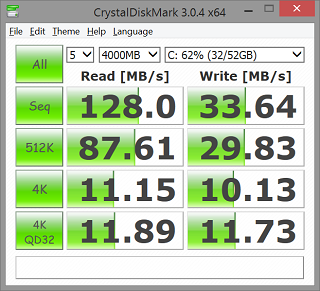
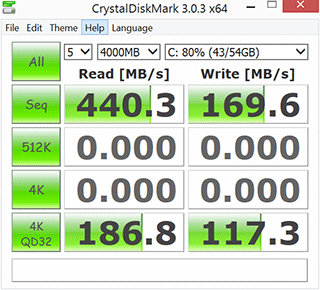








265 Comments
View All Comments
SpartanJet - Monday, May 4, 2015 - link
I initially wasn't going to buy but if you purchase through the Microsoft store you can get a 10% .edu discount and also use the 5% Microsoft discount you get by texting. My total came out to be ~$675 which included the 4/128, Type cover, pen, and tax.RBFL - Monday, May 4, 2015 - link
Did you look at the Thinkpad 10, when Lenovo has one its sales you can get the 4/128 with a 'real' keyboard for about $550. Admittedly one gen behind this on atom but not bad and seems to aim at quite a similar usage.RafaelHerschel - Tuesday, May 5, 2015 - link
I use MS Office plus iTunes and Kindle on a cheap Windows tablet from Acer with 2GB ram plus a 32GB ssd and everything runs just fine. I specifically wanted a 2GB tablet for testing purposes and I'm impressed how well it works.jabber - Tuesday, May 5, 2015 - link
I think some folks haven't realised that you DON'T have to carry around all your software and data ALL the time. Some of us work pretty light. My work laptop has hardly any user data on it at all. It all goes up the cloud. Software wise it has Office 2013, Firefox/Chrome and a couple of other bits and bobs and that's it. All sits on around 25GB on a 120GB SSD. Folks are weighing themselves down far too much. Take a serious look at what you really need/use.RafaelHerschel - Tuesday, May 5, 2015 - link
True. I had to make the transition as well. I used to fill up hard drives with clutter. I changed my attitude for a variety of reasons. One of those reasons is that wanted to work more efficient.On my desktop games take up space, but games can be removed and later re-installed from Steam or another similar service.
Michael Bay - Wednesday, May 6, 2015 - link
Have you ever used at least a baytrail tablet before spewing such nonsense?hans_ober - Monday, May 4, 2015 - link
The charge times are horrible. They should have added the Surface charging port + micro usb charge support (for emergencies). Or just used USB C.Doroga - Monday, May 4, 2015 - link
Would be a great thing to fix barrel distortion in product photos.Very easy to do it in full auto with modern software
duploxxx - Monday, May 4, 2015 - link
The GPU in the Surface 3 is really not enough to play most games, and even on our value settings, the Surface 3 is not a great experience for DOTA 2. The higher TDP of Core M lets it do ok in this test, but overall the Surface 3 is a long way back of even the Surface Pro 3 Core i3.poor Intel, 2015 and still not able to provide a gpu decent to play a game, guess what Intel look at the market, all kids use tablets these days to play games, none will ask for a x86 based one...unless they have stupid parents still just going for the jingle. but then again the market of mobile games is flood by ARM based games, way to late for mobile windows based things..
Jon Tseng - Tuesday, May 5, 2015 - link
Bay Trail runs Skyrim and Far Cry 3 fine. Cherry Trail with 4x the EUs should have no problem.I guess it comes down to your definition of "most games"...